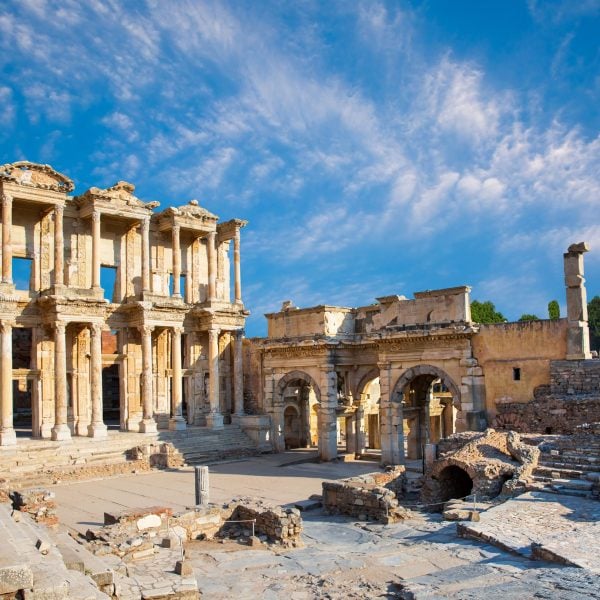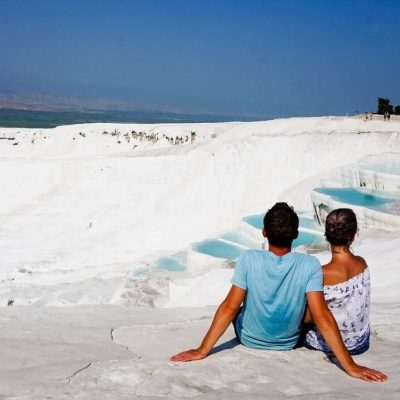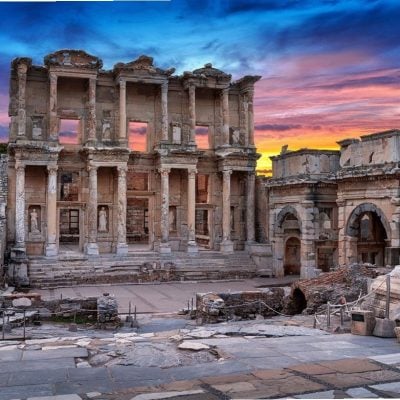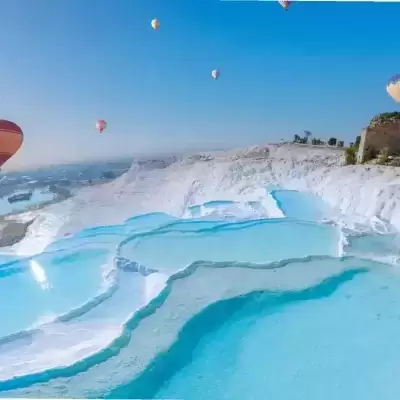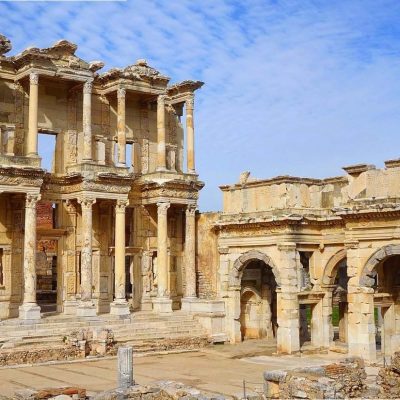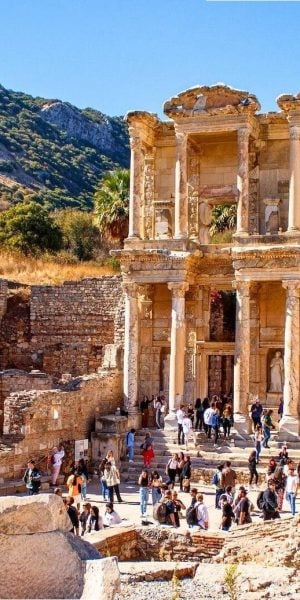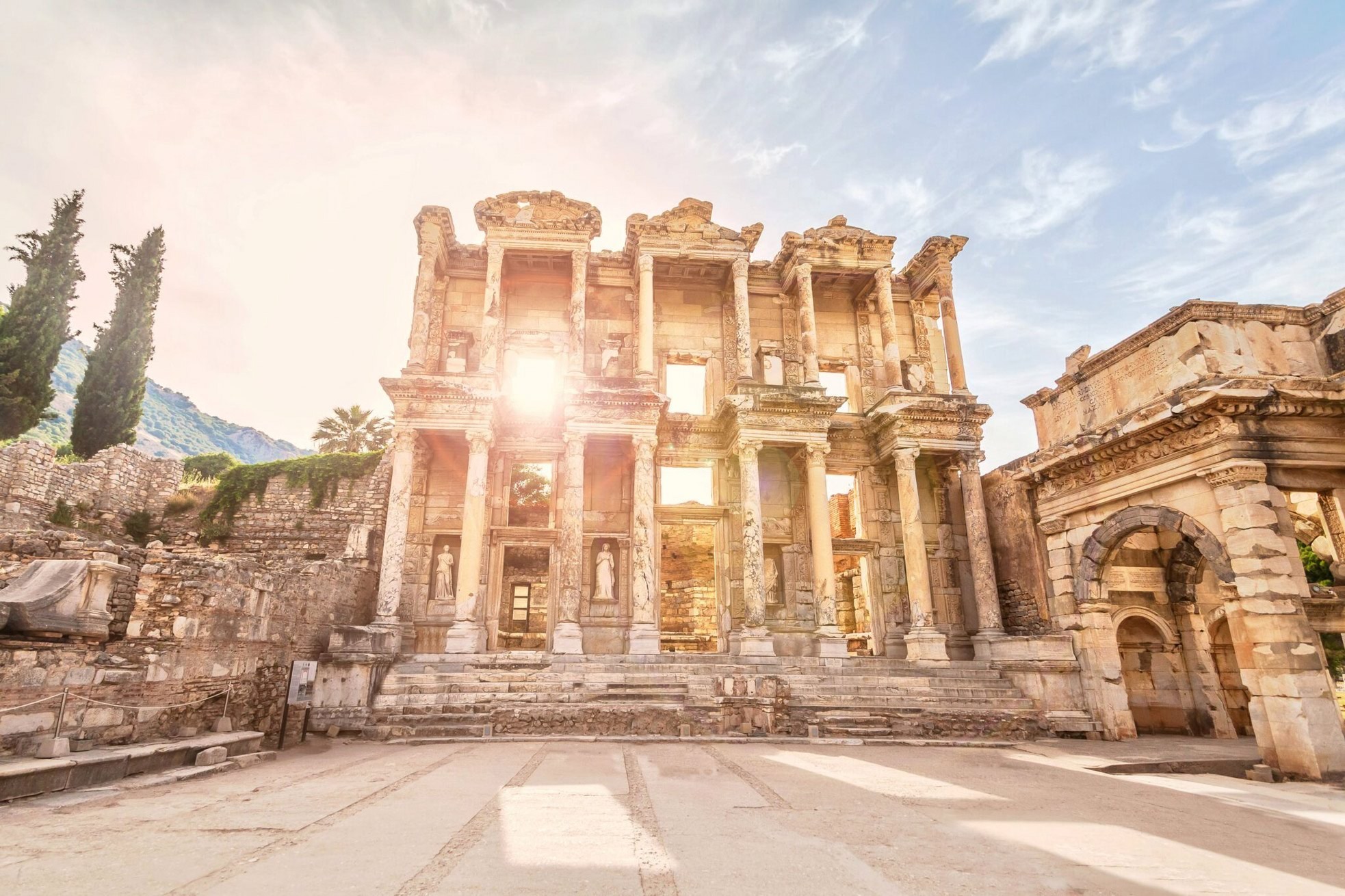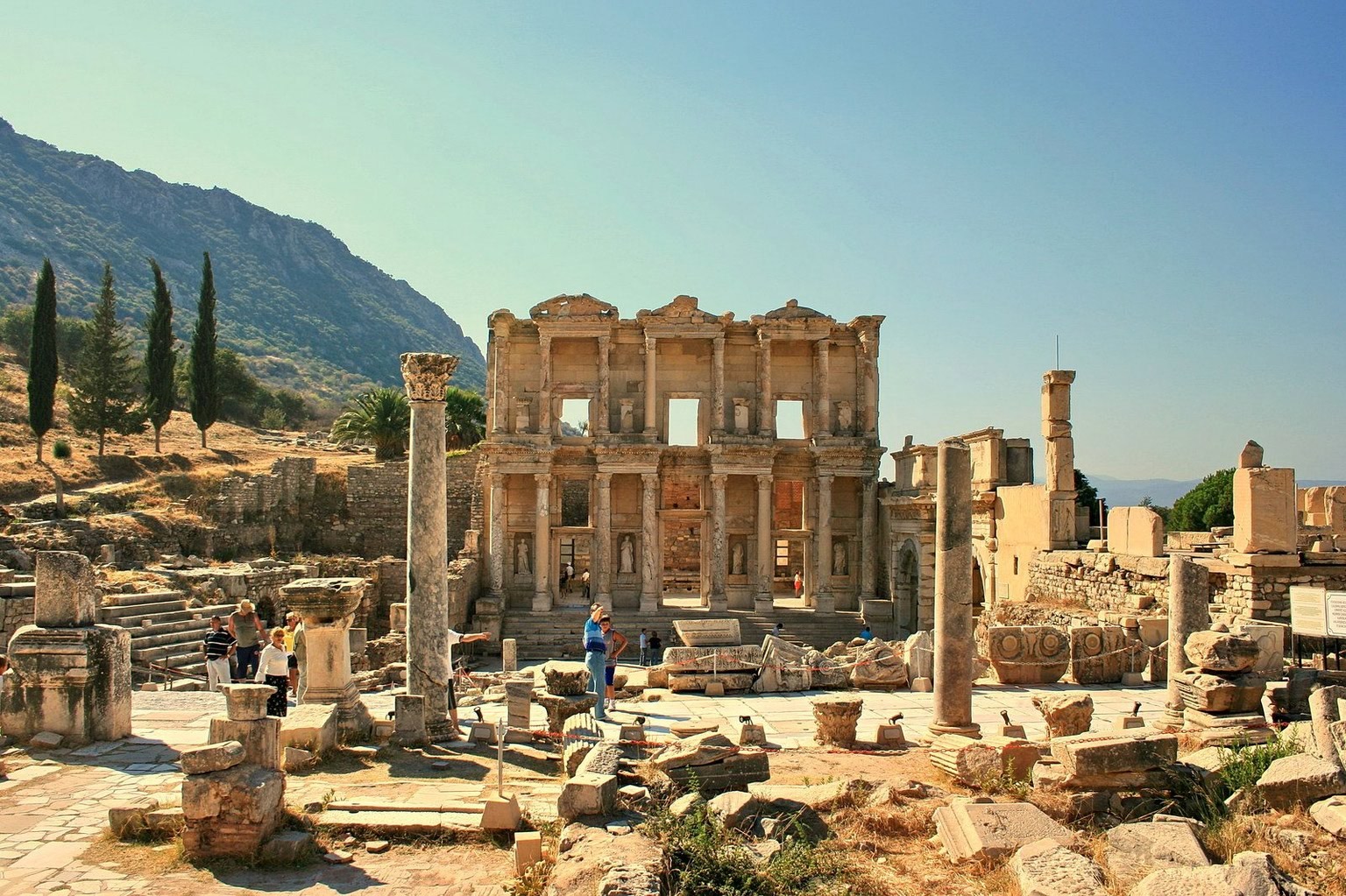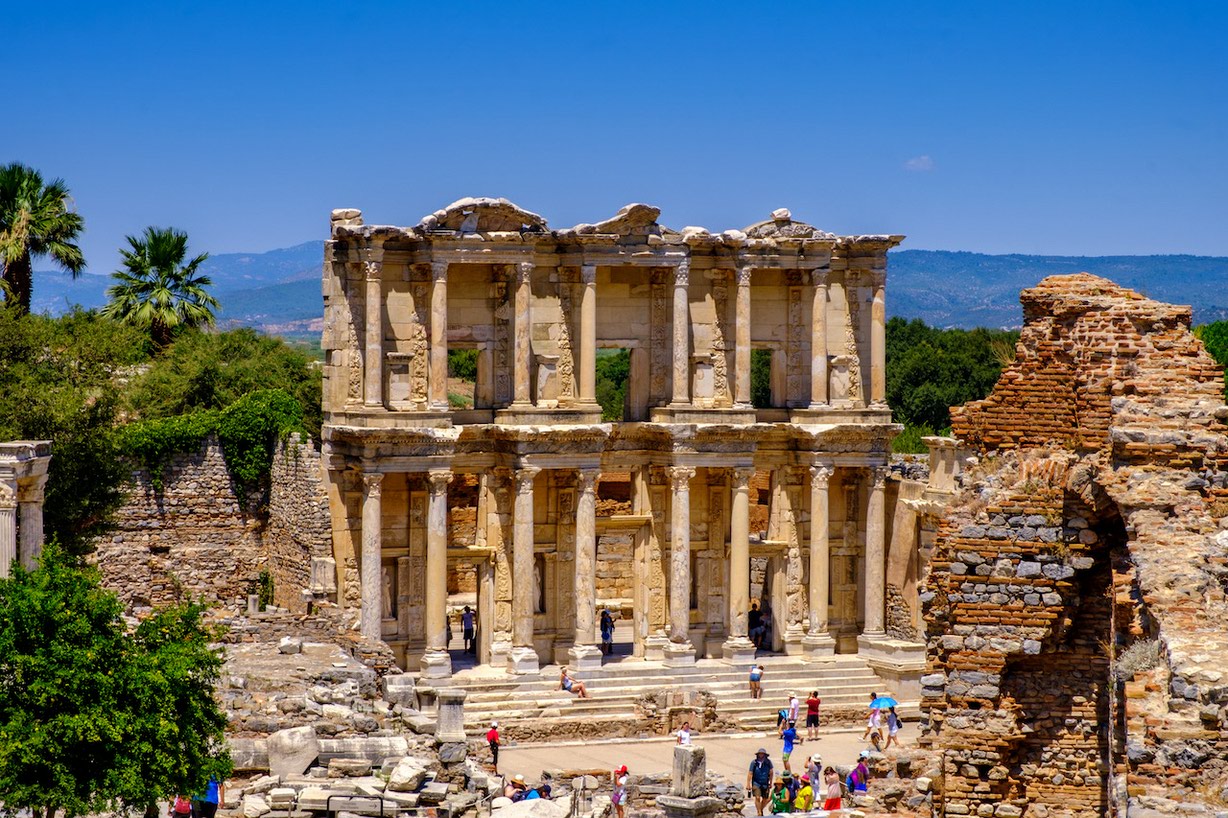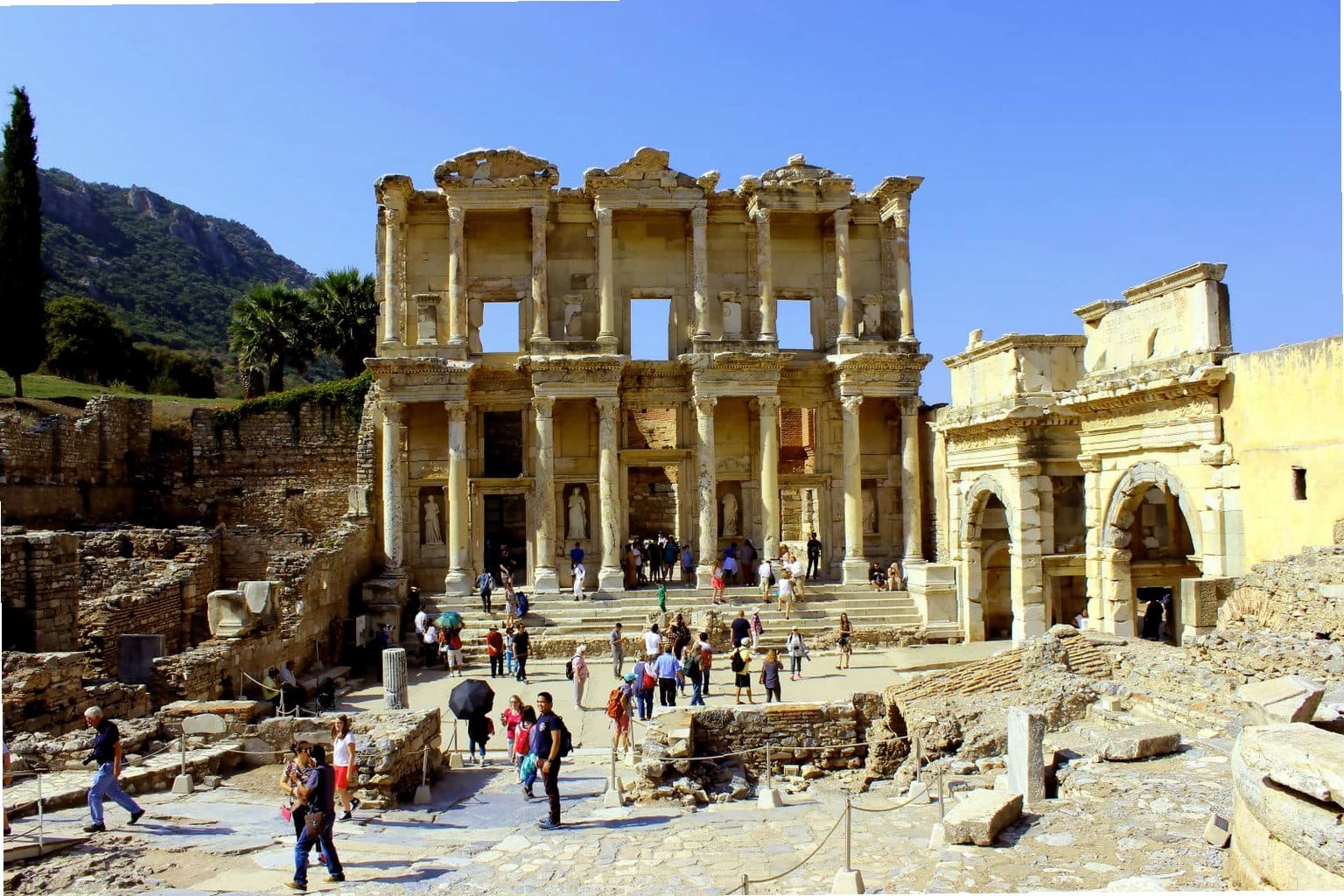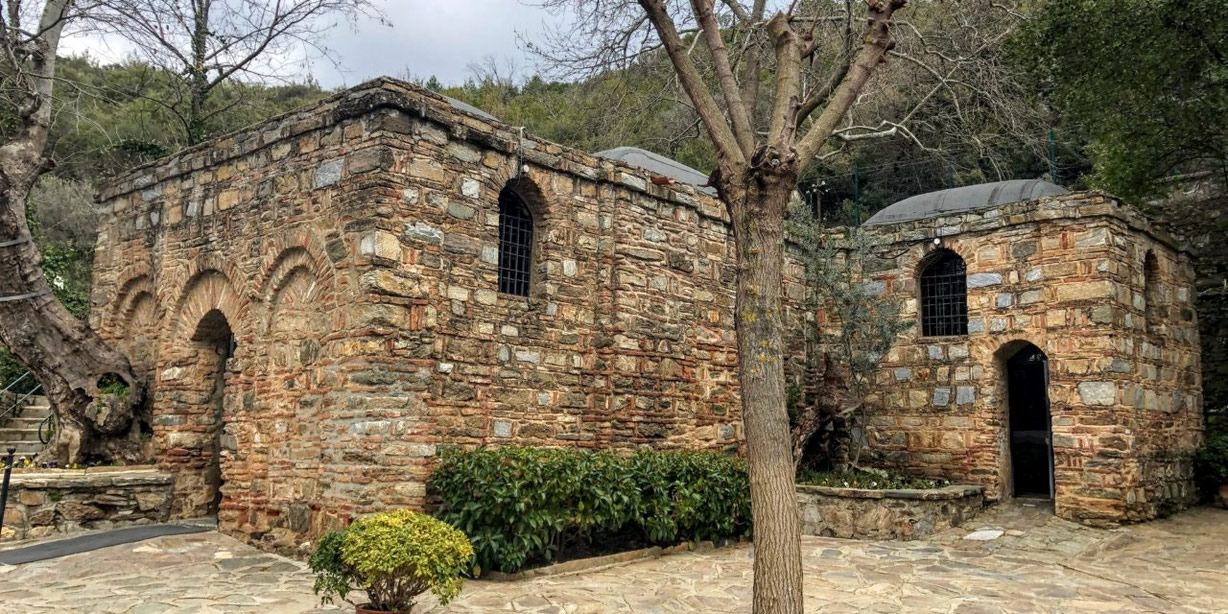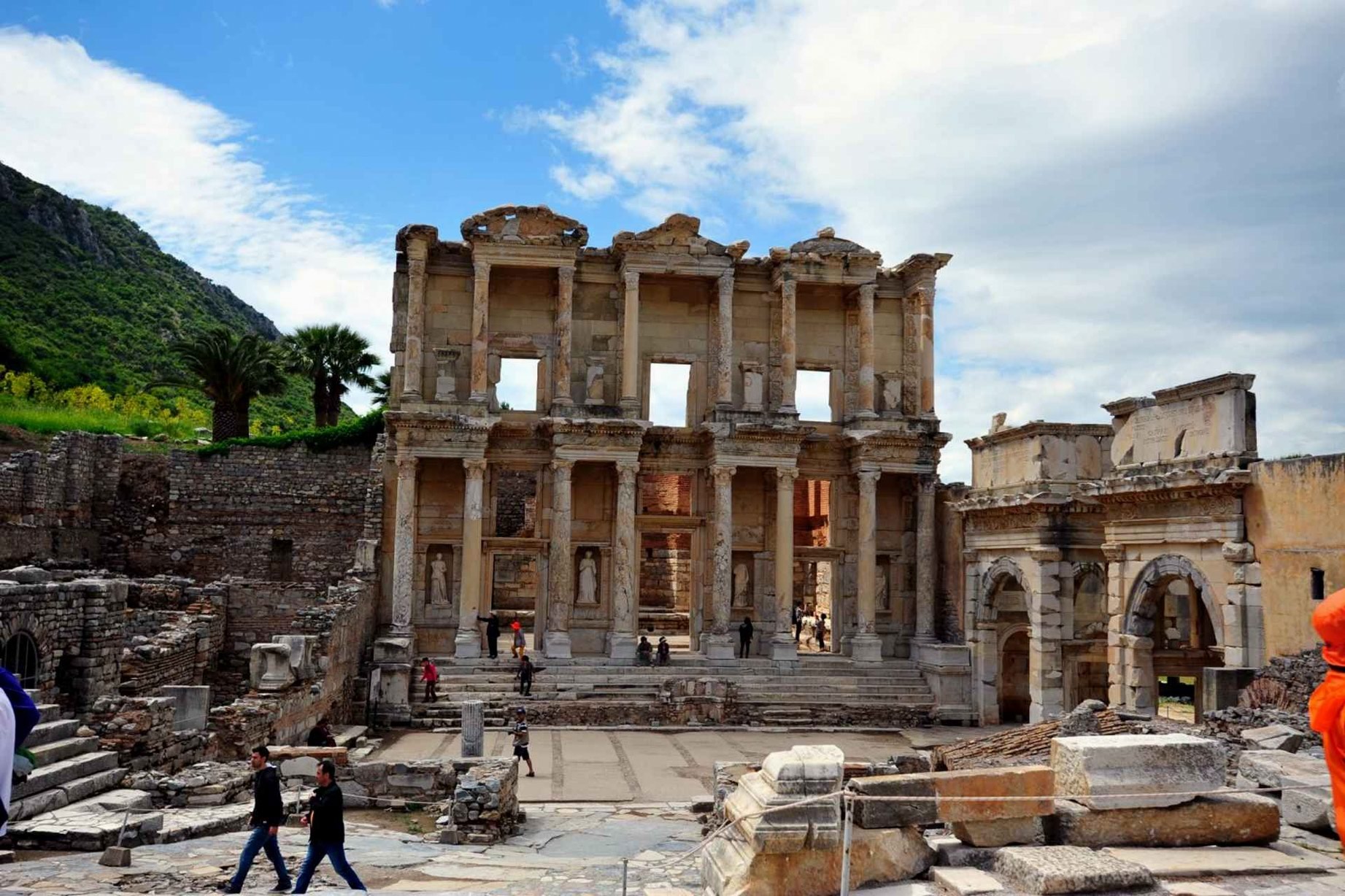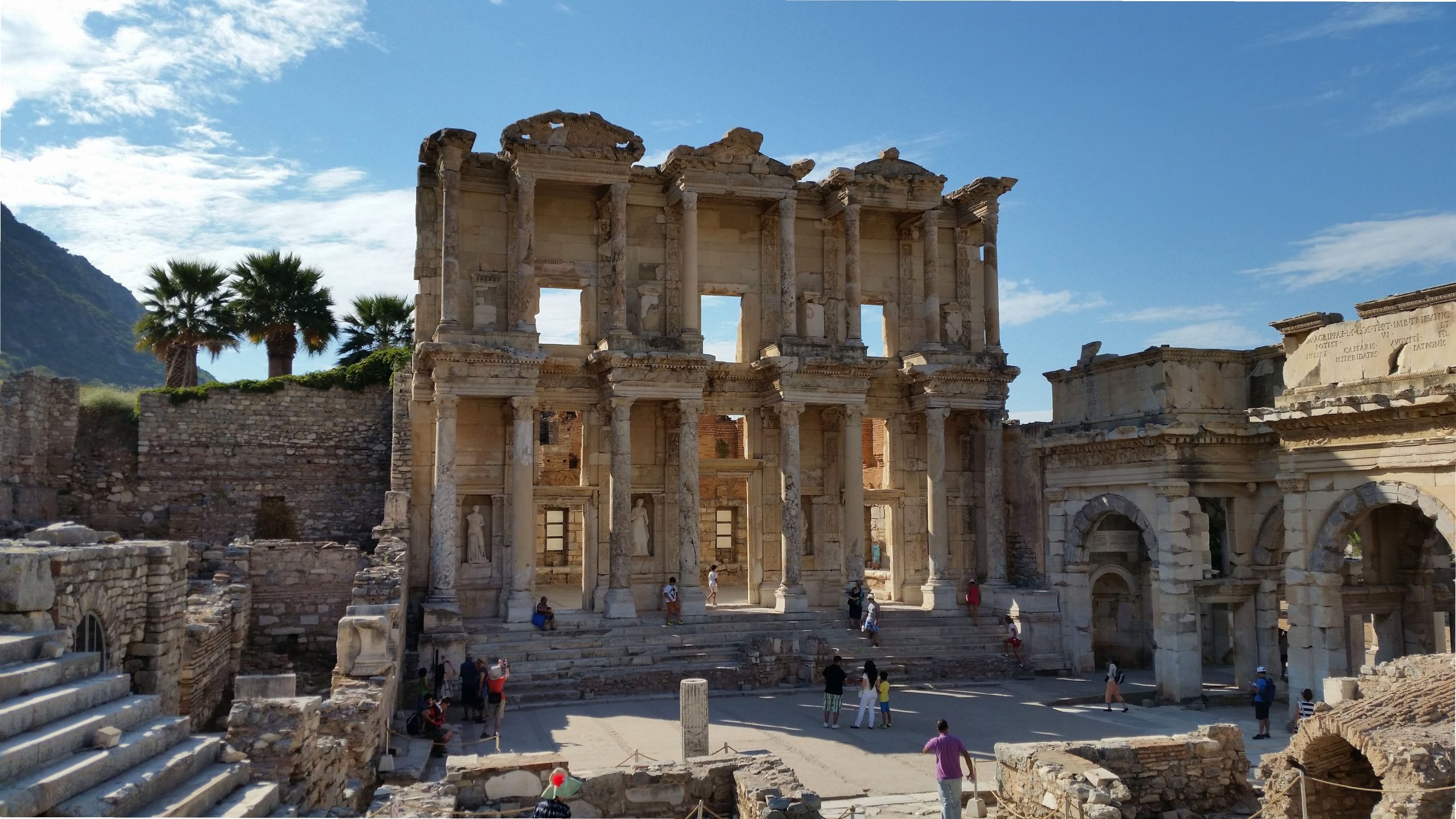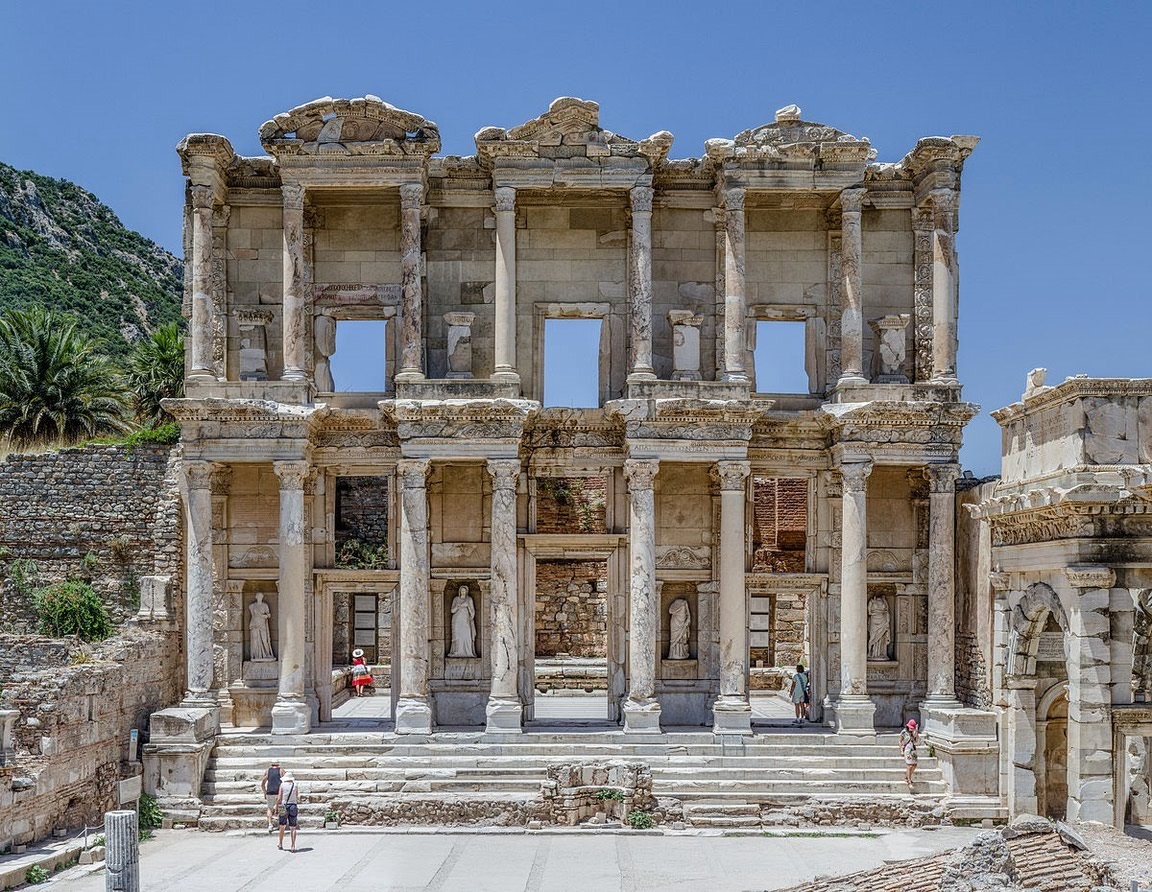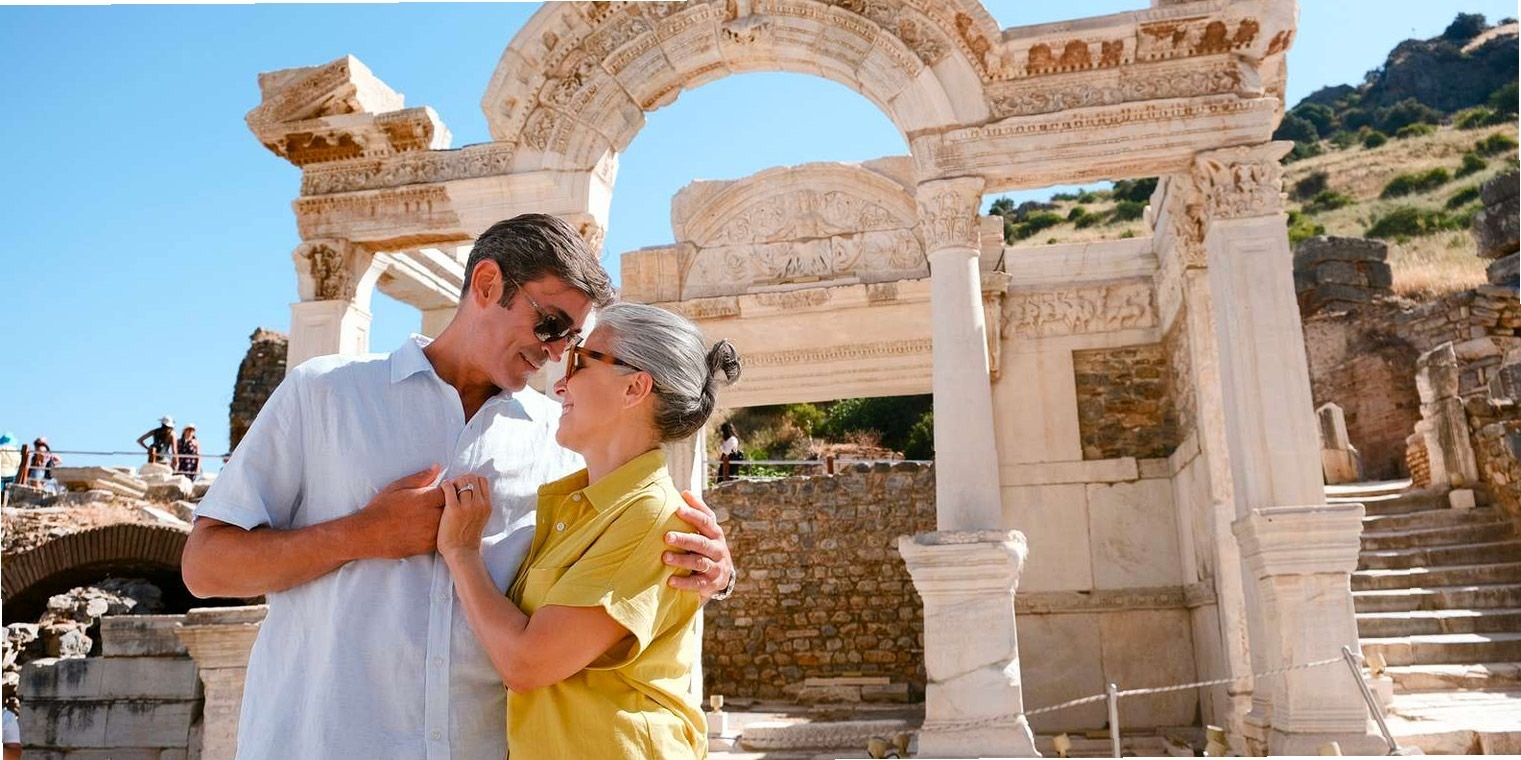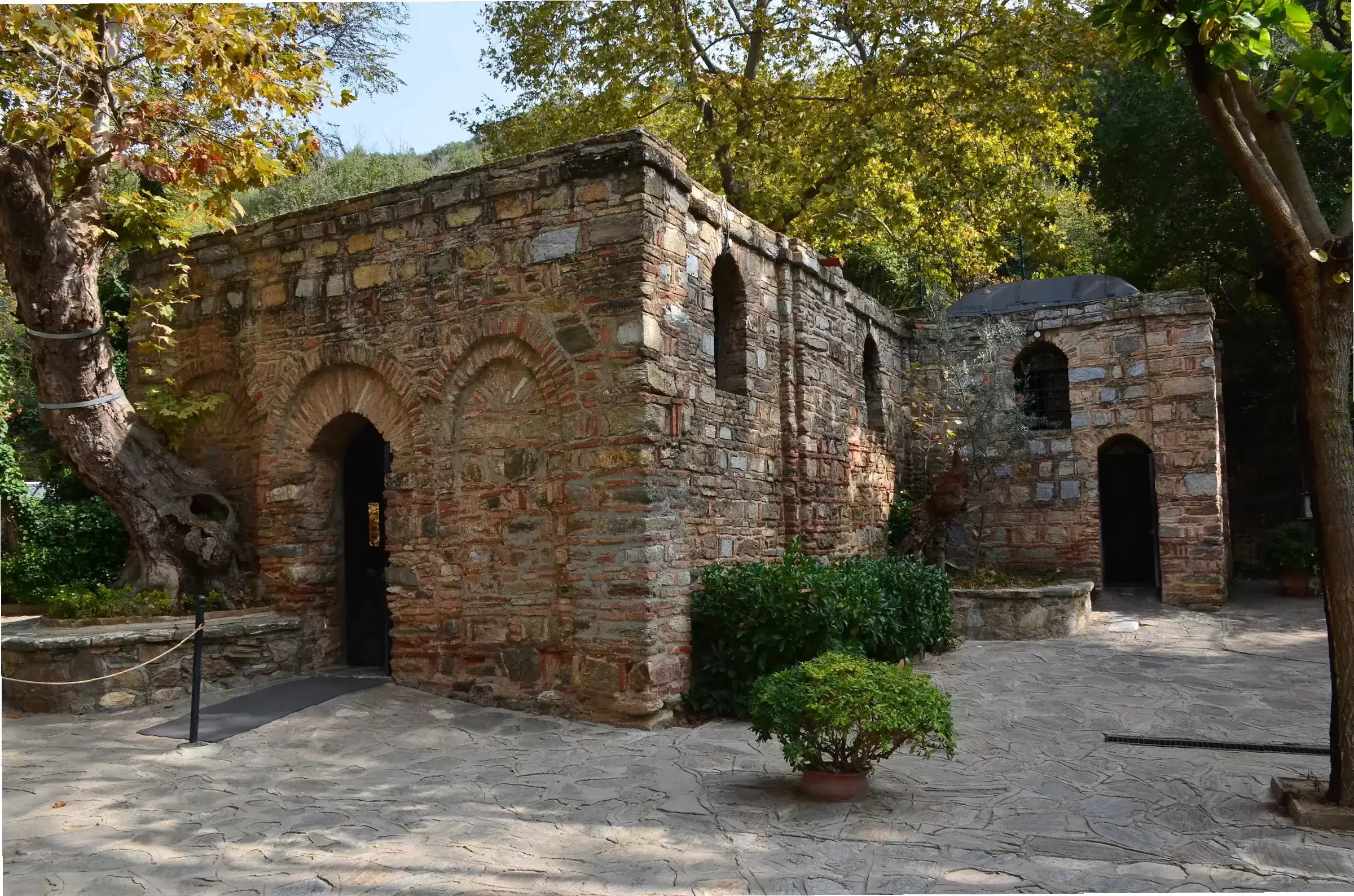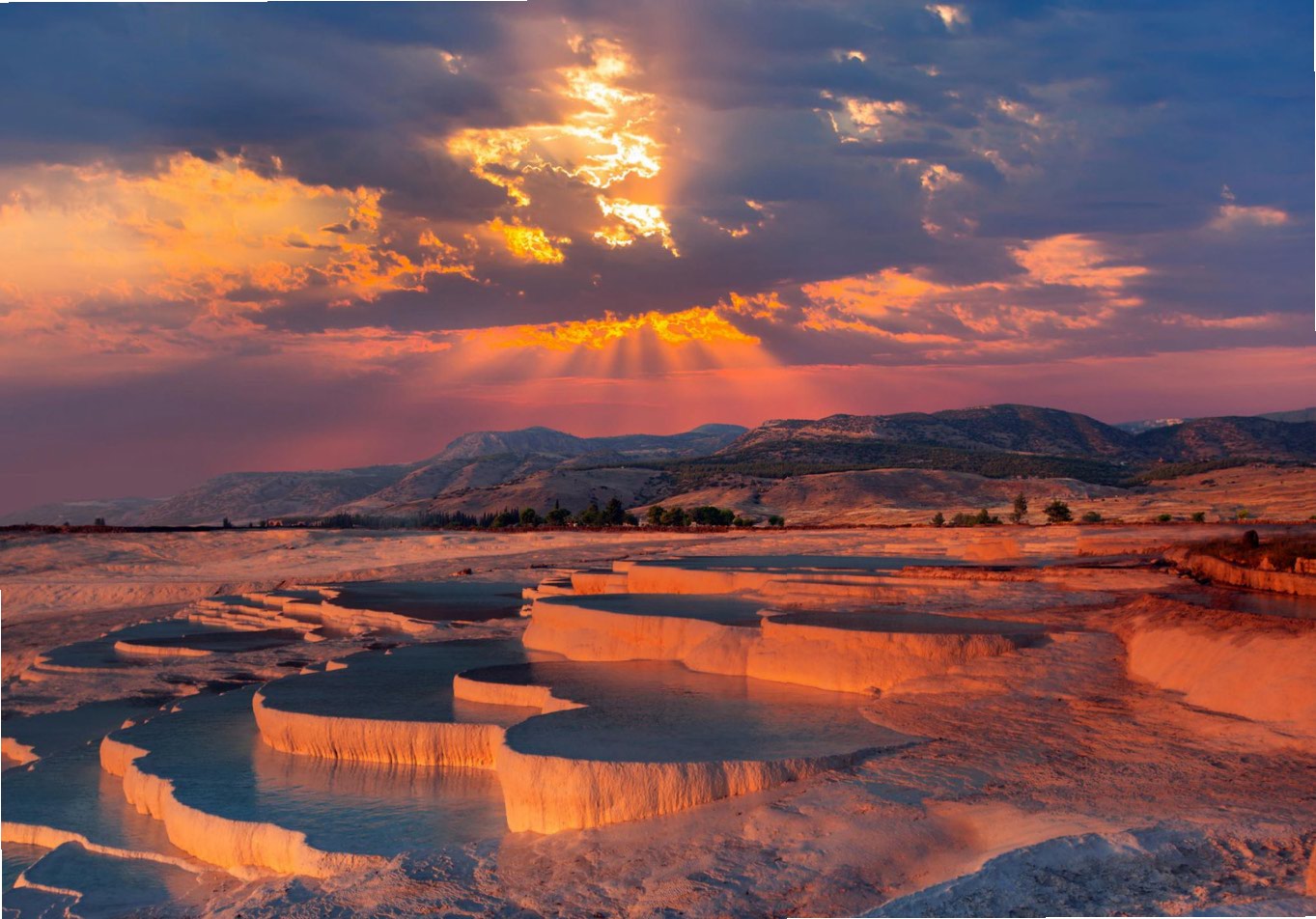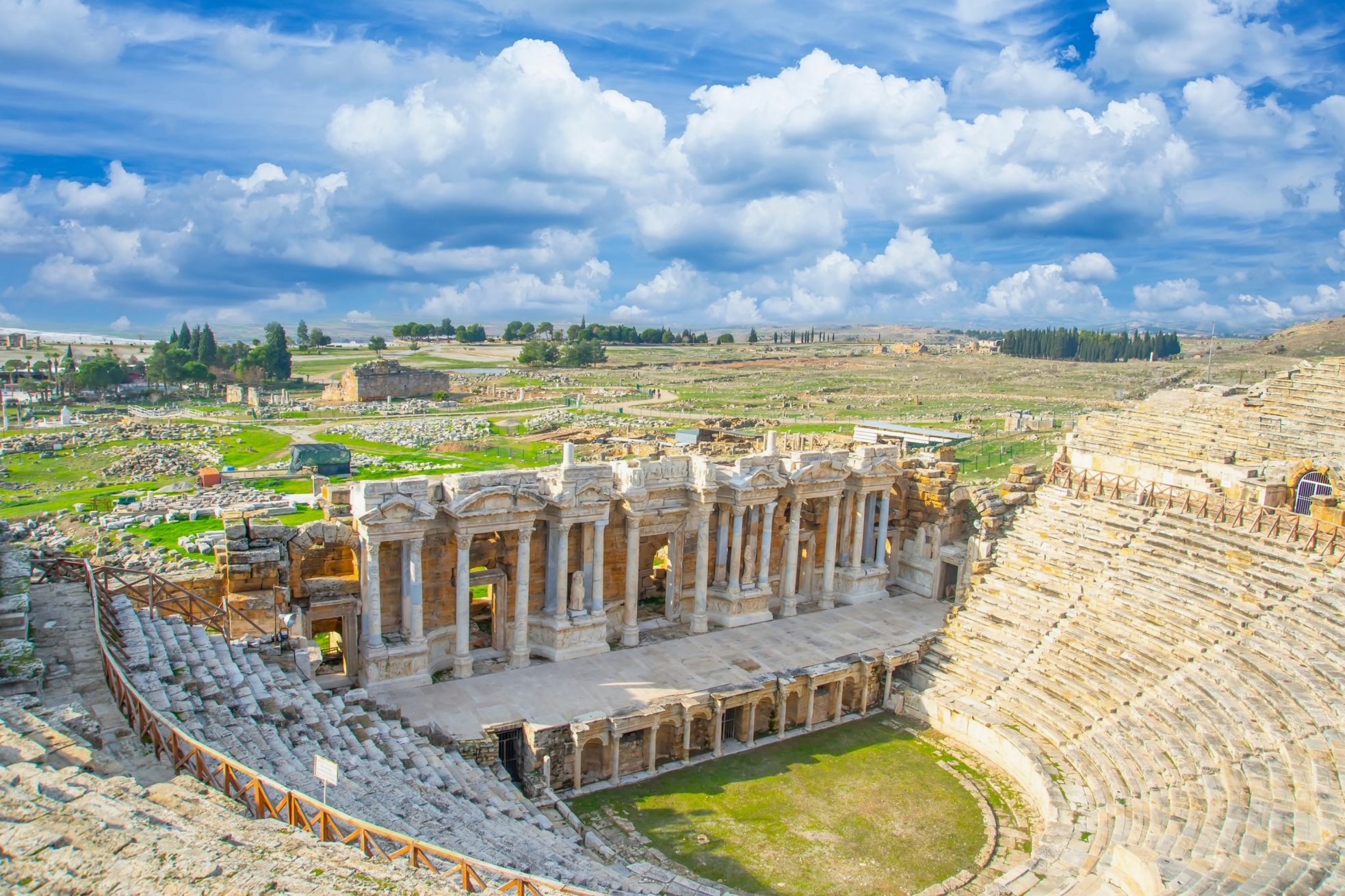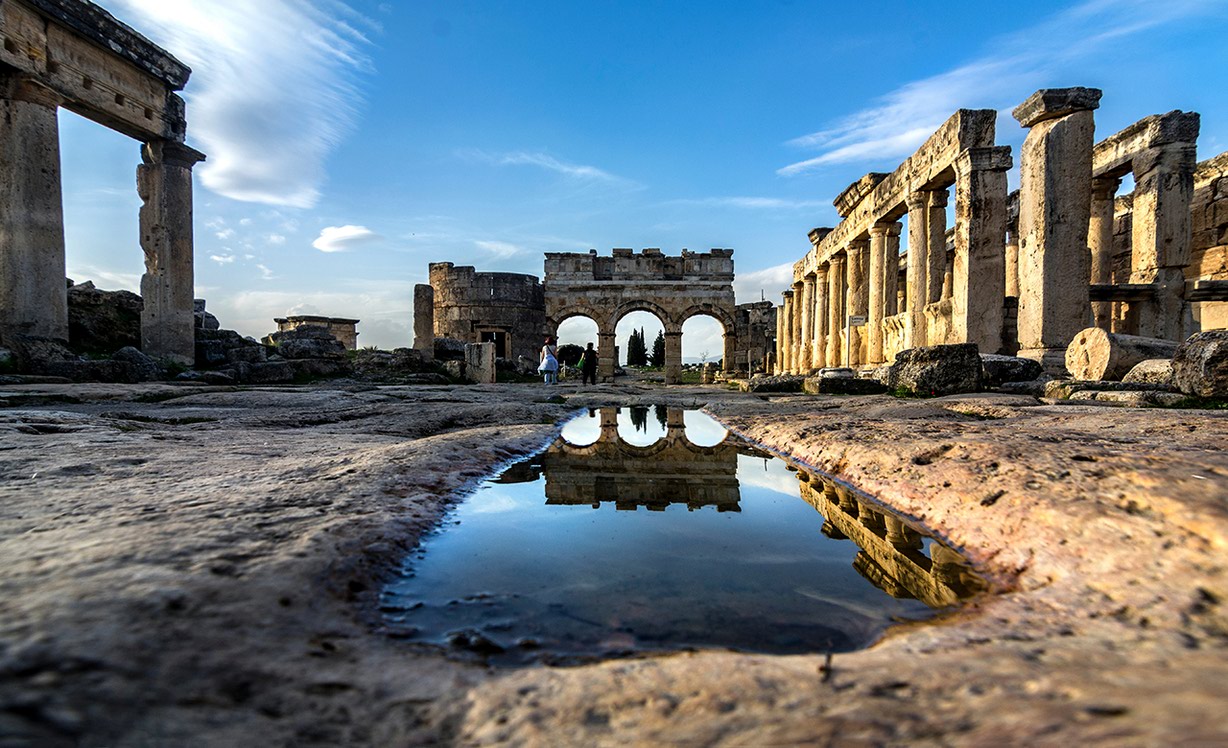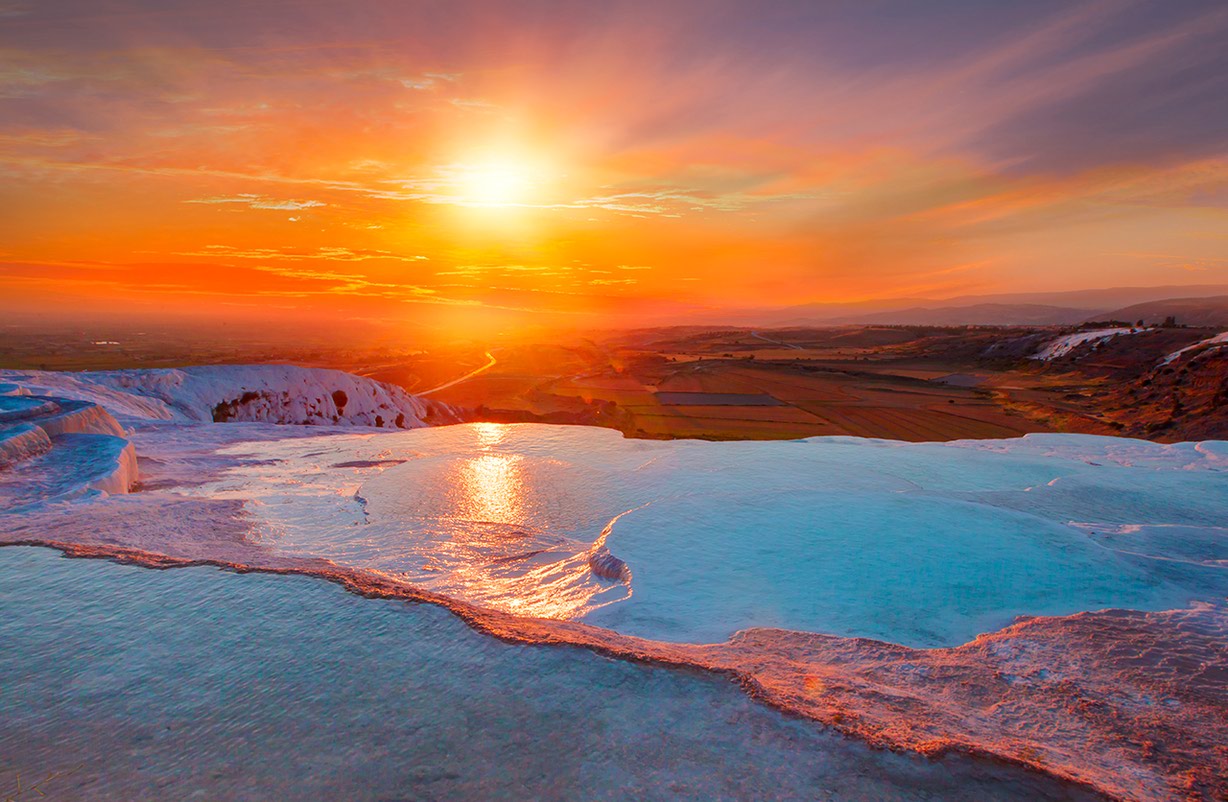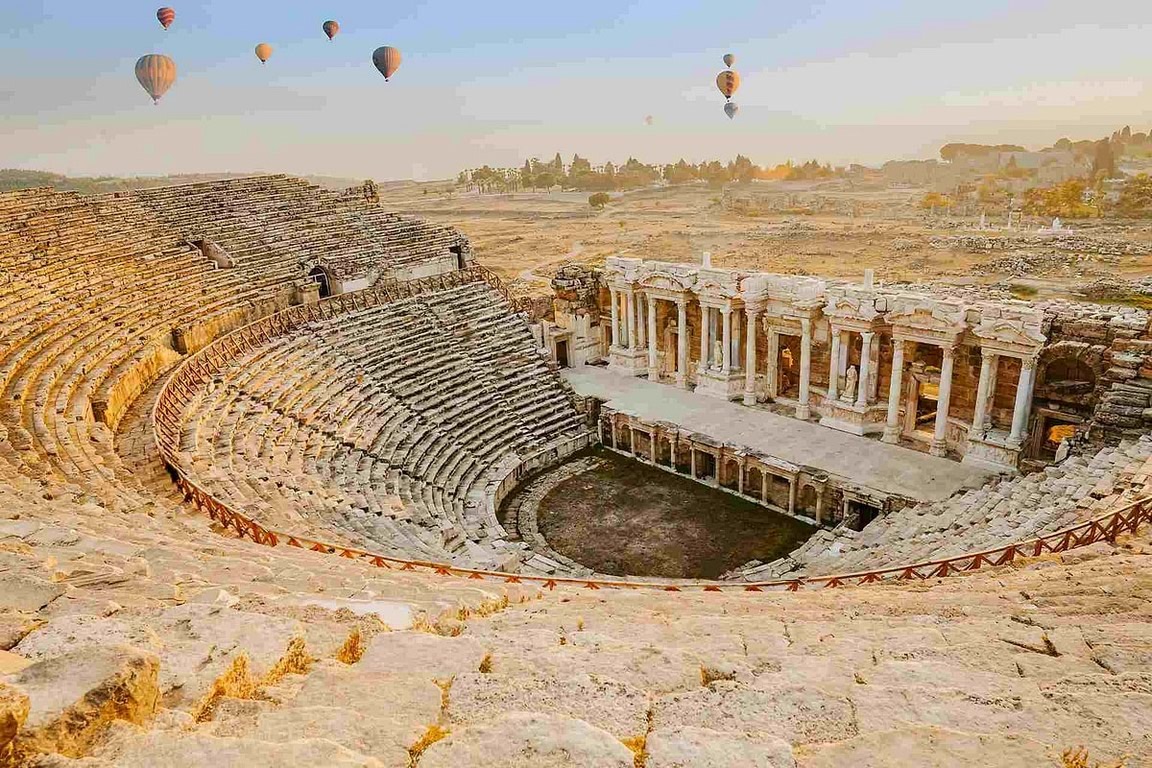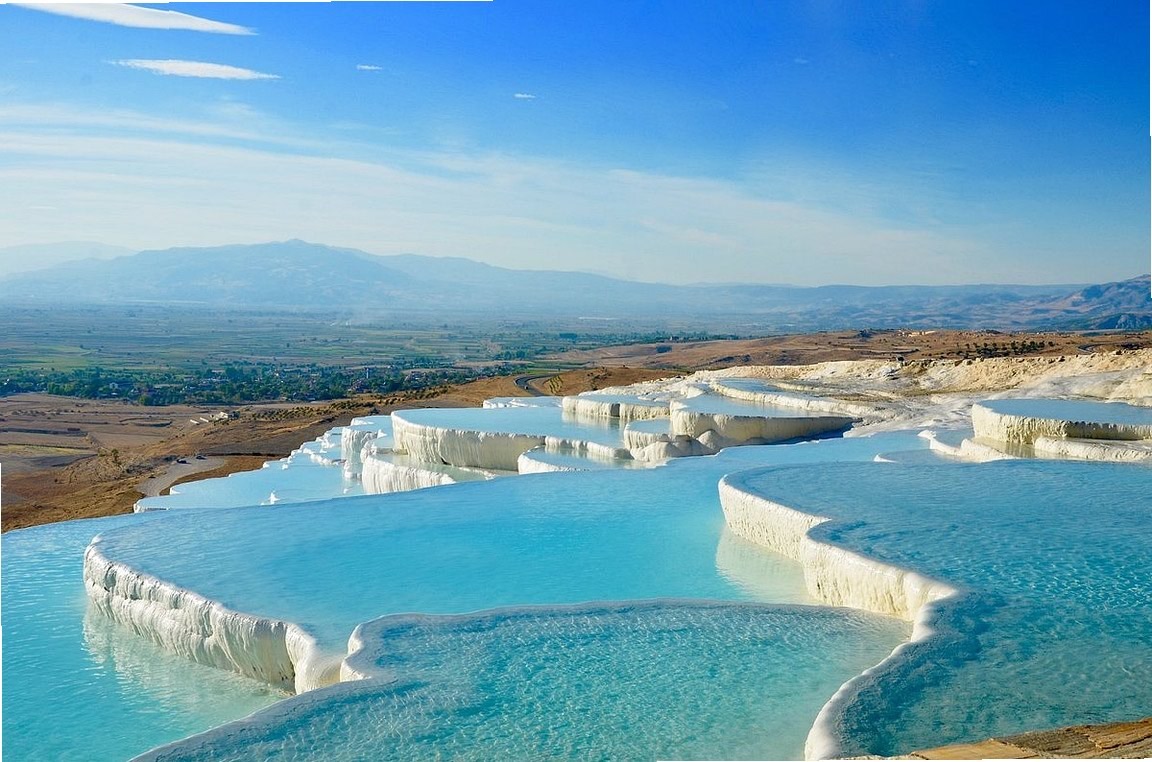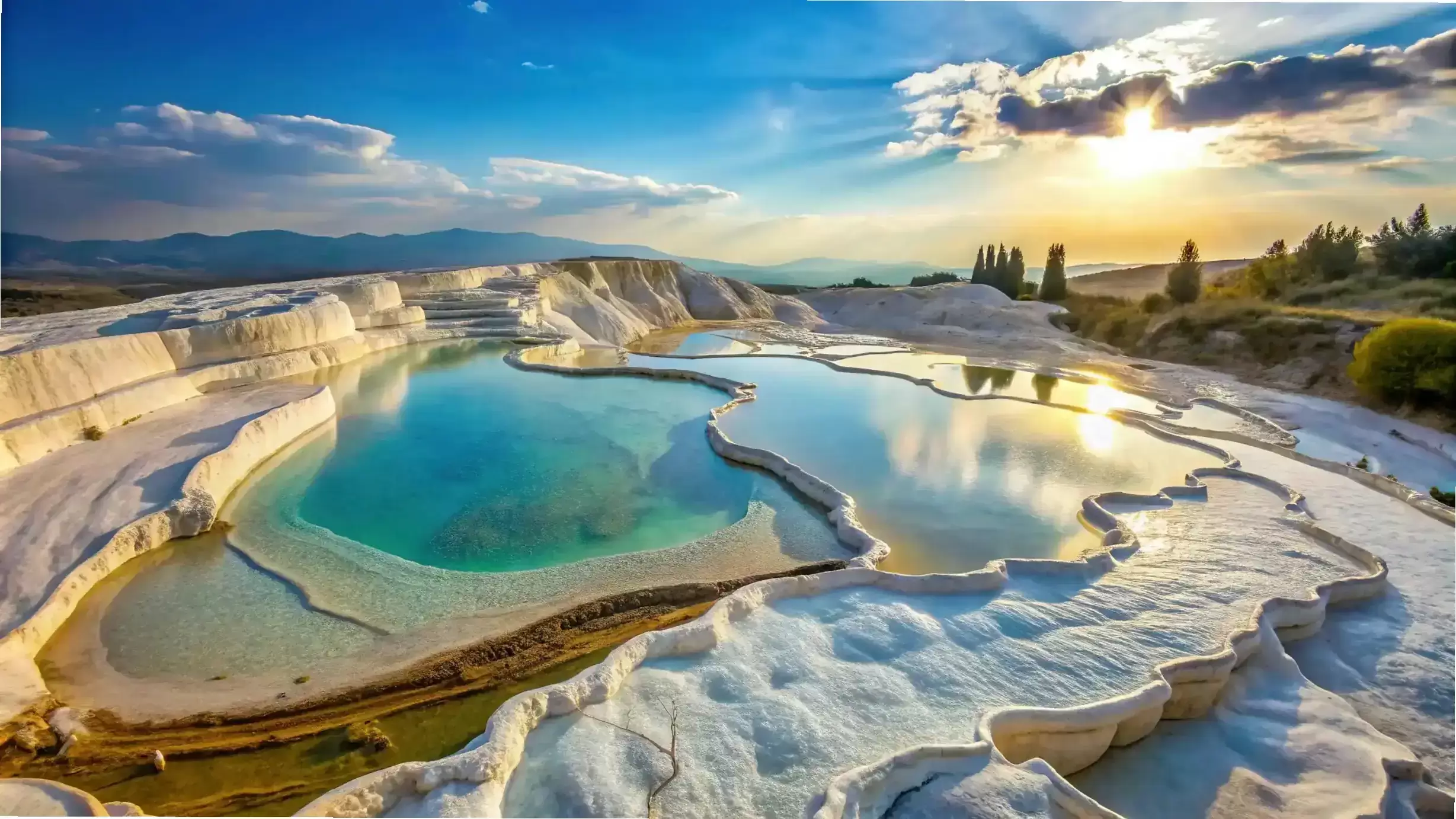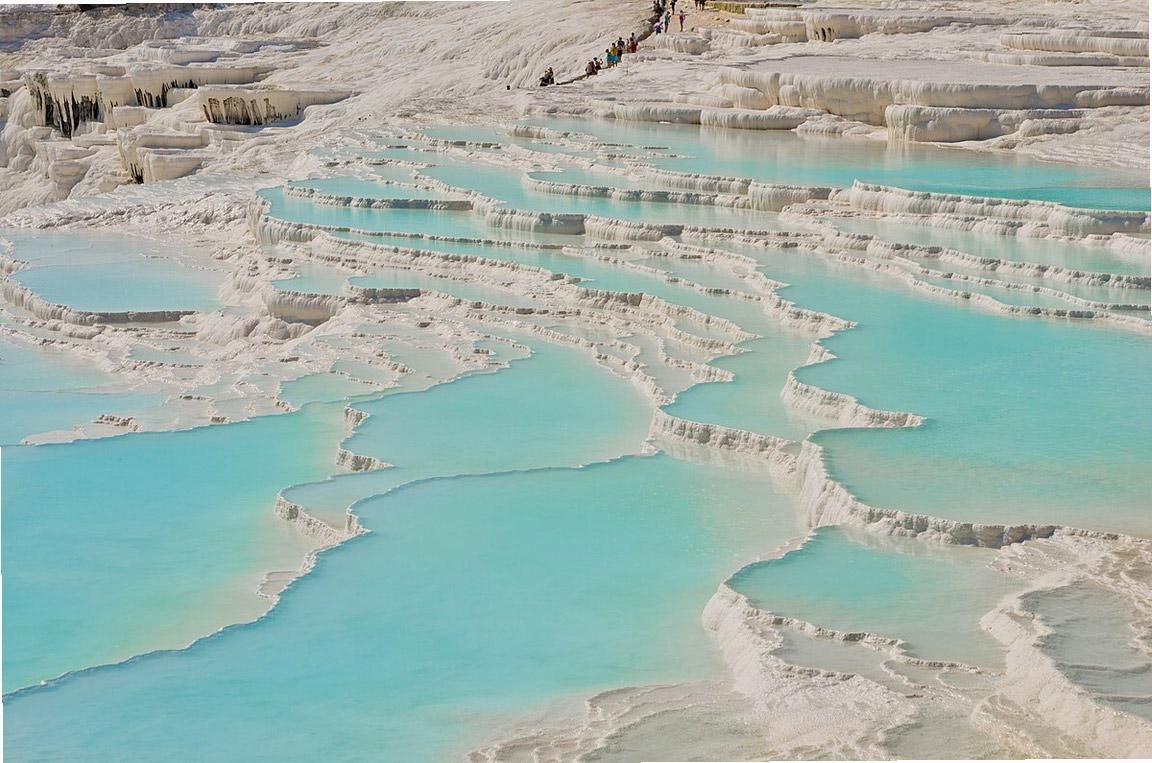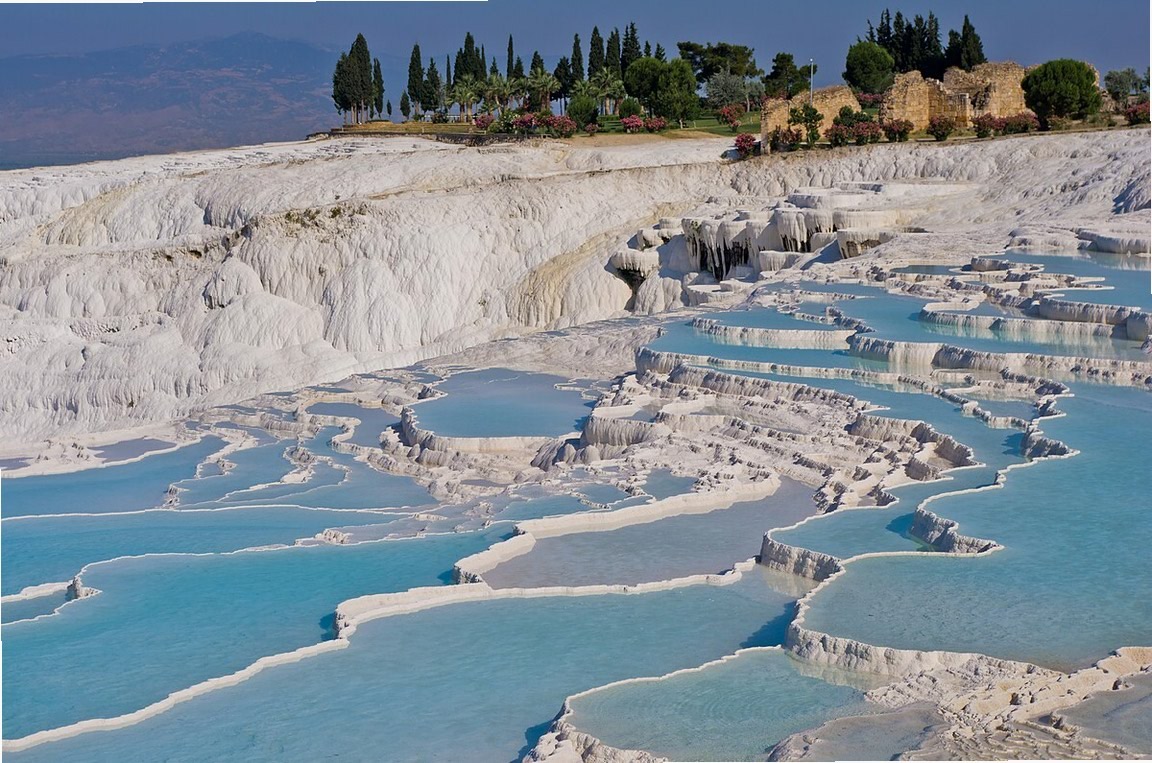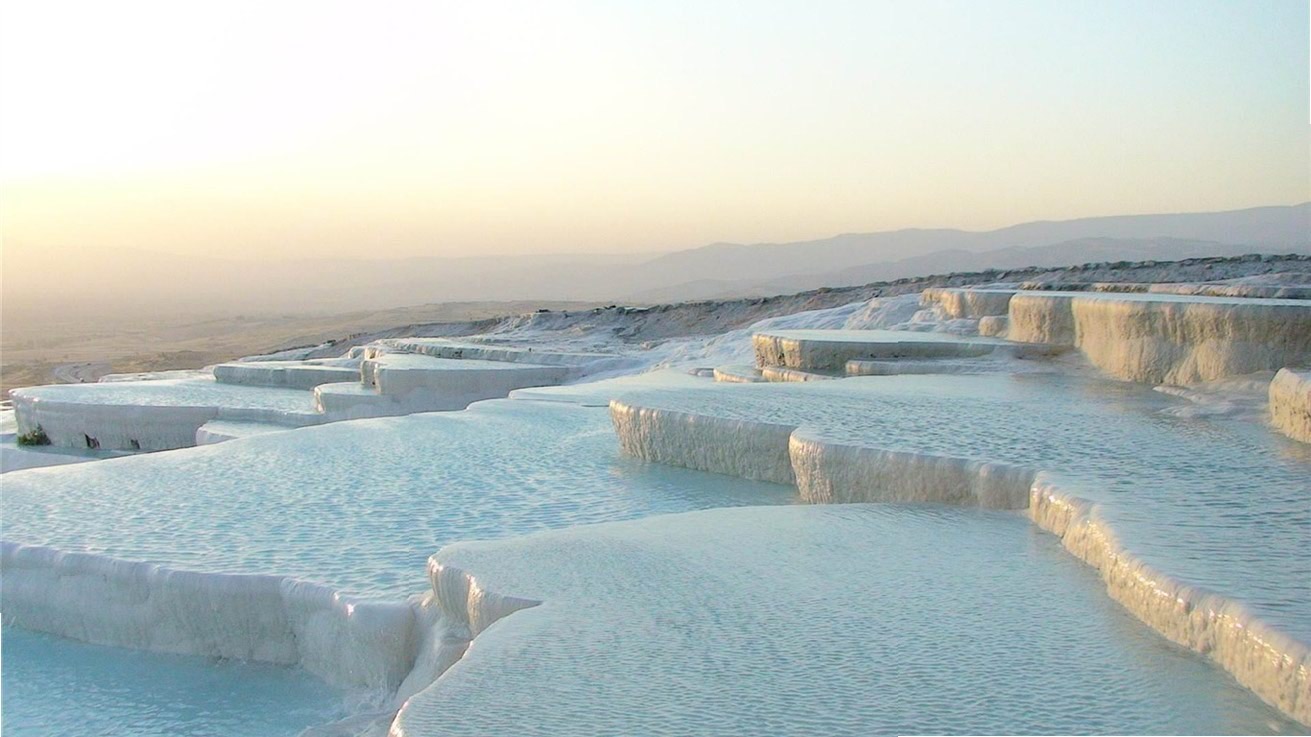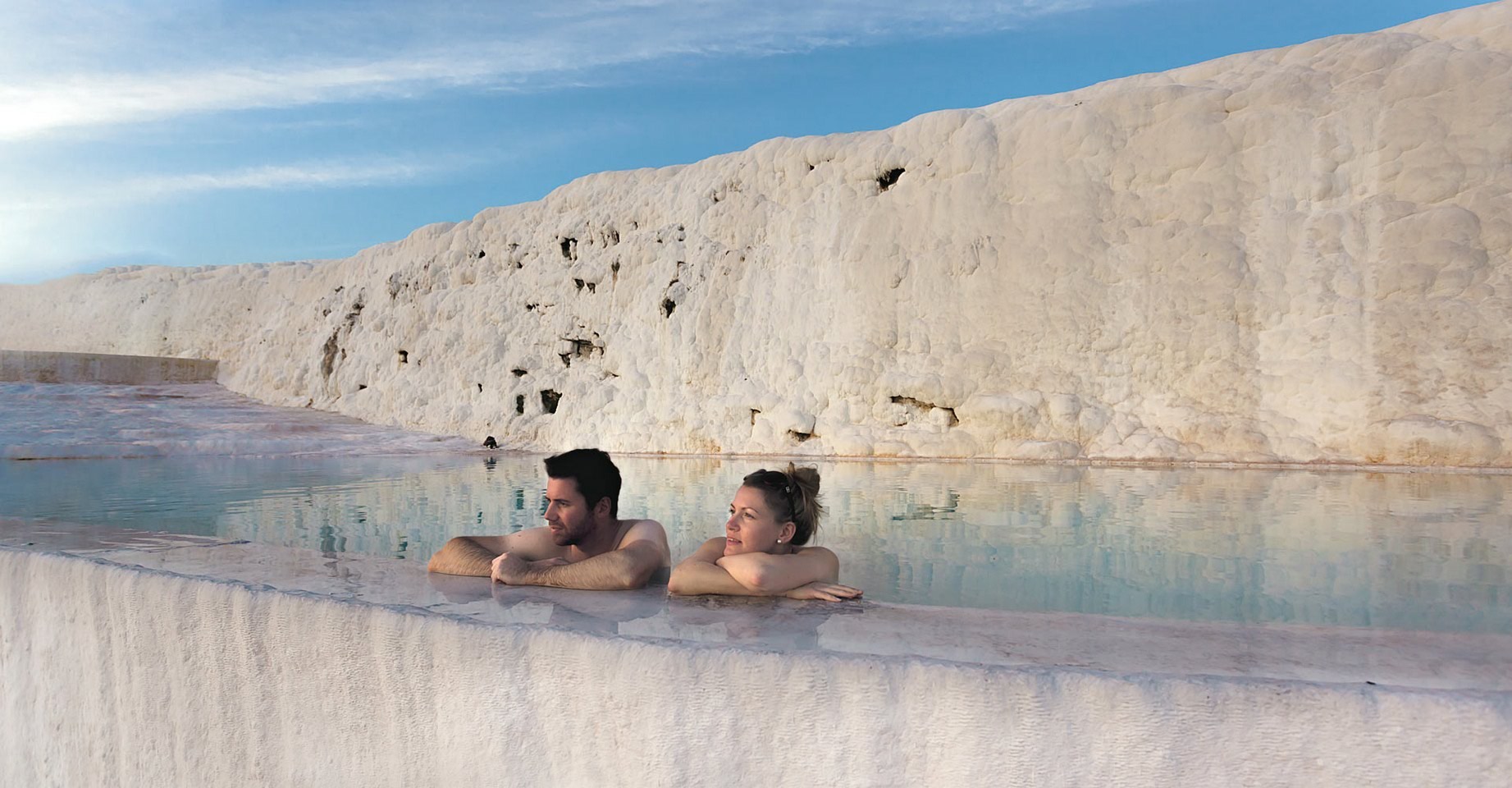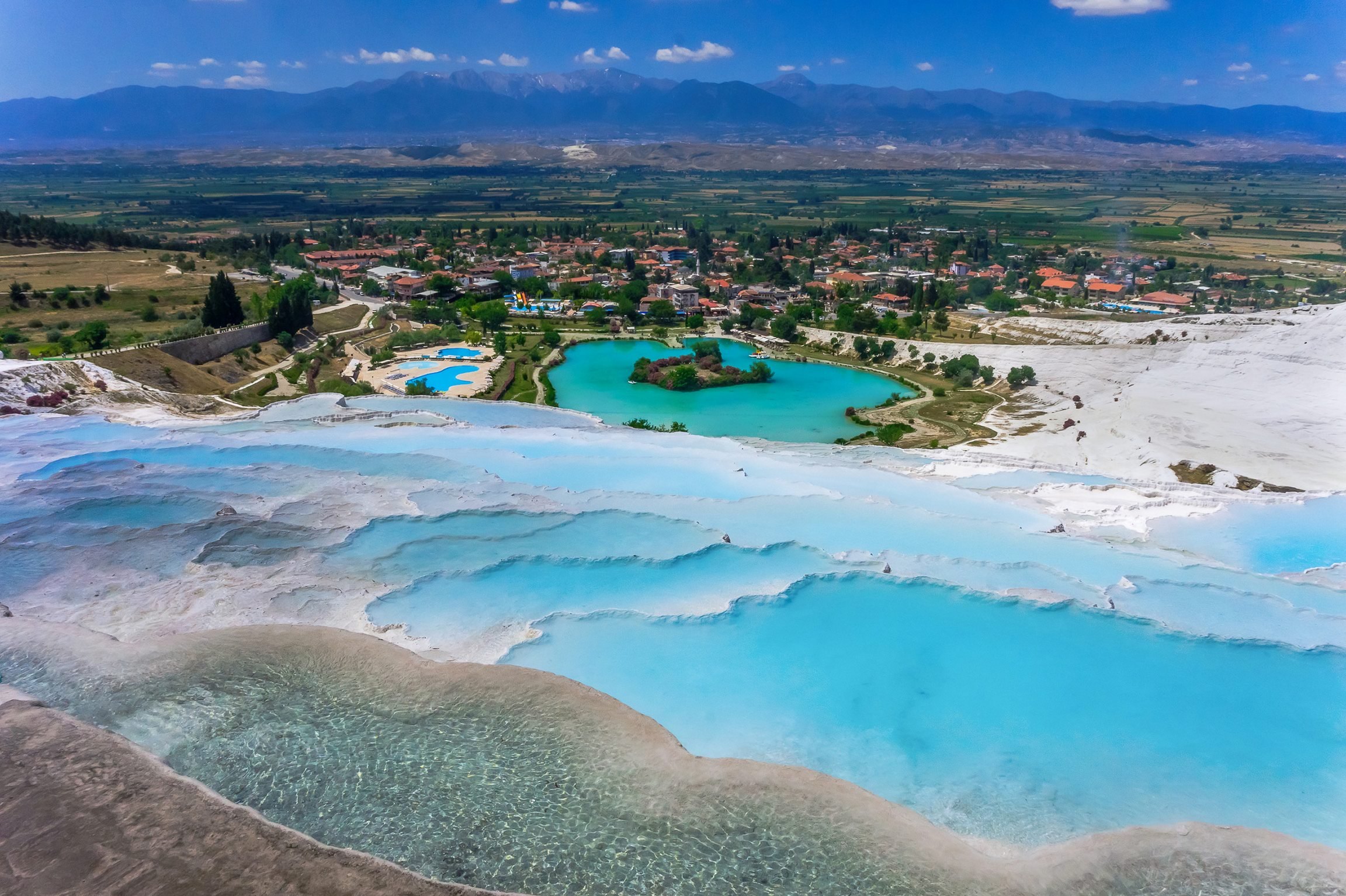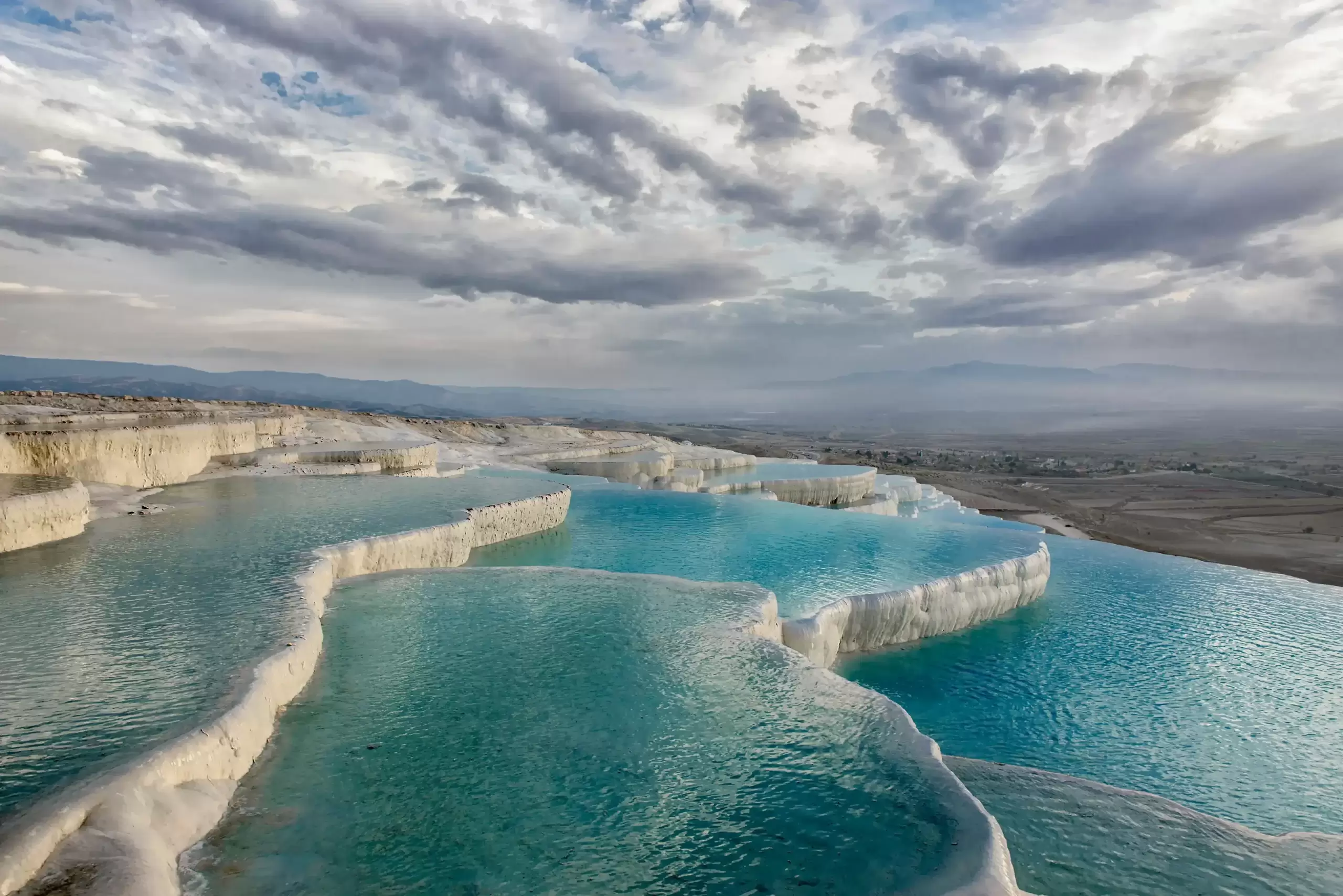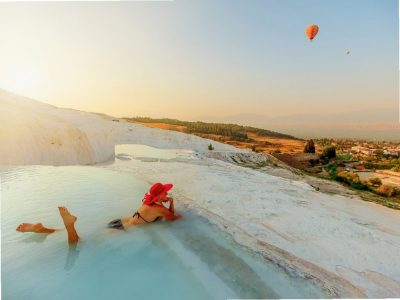2 Days Pamukkale and Ephesus Tour From Istanbul
2 Days Pamukkale and Ephesus Tour Package
Visit Pamukkale and Ephesus on a 2-day tour from Istanbul with flights, hotel, meals, and guided tours. Explore white travertines and ancient Roman ruins.
Tour Overview
Uncover two of Turkey’s most iconic destinations on this all-inclusive 2 Days Pamukkale and Ephesus Tour from Istanbul. Begin your journey in the mineral-rich white terraces of Pamukkale and the ruins of ancient Hierapolis, then travel to the legendary Roman city of Ephesus and the sacred House of Virgin Mary. With domestic flights, hotel accommodation, guided tours, and transfers included, this tour is designed for travelers who want to see more of Turkey in a limited time.
Why Choose This Tour?
- Visit two UNESCO-listed sites: Pamukkale’s white travertines and Ephesus’s historical wonders.
- Fly from Istanbul for maximum comfort: Save time with direct domestic flights to Denizli and from Izmir.
- Stay overnight in Kuşadası: A beautiful Aegean town perfectly located between both destinations.
- All logistics handled: Hotel pick-up, airport transfers, flights, guided tours, and meals are all pre-arranged.
- Ideal for short stays: See the highlights of Western Turkey in just two days.
- Professional guides: Learn the stories, legends, and history of each site from expert local guides.
Experience the best of Turkey’s natural beauty and historical grandeur with this 2-day escape from Istanbul—a journey that blends ancient civilizations, sacred places, and stunning landscapes.
Tour Itinerary
Fly from Istanbul to Denizli & Pamukkale Tour
Meal: Lunch
03:30 am ─ Our team will pick you up from your hotel in Istanbul and transfer you to the airport.
(If you are already at the airport, you may proceed directly to your flight.)
06:55 am ─ Flight from Istanbul to Denizli.
08:10 am ─ Arrival at Denizli Airport.
Our staff will greet you at the airport and transfer you to Pamukkale for your full-day guided tour.
*Flight times may vary depending on availability.*
The journey begins with one of Turkey’s most iconic landscapes—Pamukkale Travertines, also known as the “White Paradise.”
You will visit the following sights during the Pamukkale Tour:
- Pamukkale Travertines: A natural wonder made of calcium-rich terraces formed by thermal waters. You’ll walk barefoot along the warm, shallow pools and take in the otherworldly scenery.
- Hierapolis Ancient City: Founded during the Hellenistic period and expanded by the Romans, this ancient spa city includes temples, streets, and healing baths built around natural hot springs.
- Hierapolis Theater: A grand Roman structure from the 2nd century AD with a capacity of 10,000 spectators. Its well-preserved stage and seats offer a vivid look into ancient performances and ceremonies.
- Agora & Necropolis: Once a bustling commercial center, the Agora was the heart of local trade. Nearby lies the vast Necropolis, filled with sarcophagi and tombs that showcase ancient burial customs.
- Karahayit Red Springs: These iron-rich thermal waters emerge at high temperatures and are believed to have healing properties. The mineral content gives the rocks a vibrant reddish hue and makes this stop a colorful end to the day.
16:00 pm ─ The Pamukkale tour ends.
You will be driven to Kuşadası, a beautiful town by the Aegean Sea.
Overnight stay at your hotel in Kuşadası.
Ephesus Tour & Fly to Istanbul
Meal: Breakfast and Lunch
08:30 am ─ After breakfast and hotel checkout in Kuşadası, you will be transferred to the ancient city of Ephesus to begin your full-day guided tour.
You will visit the following sights during the Ephesus Tour:
- Ephesus Ancient City: A UNESCO World Heritage Site and one of the most important ancient cities in the Mediterranean. Once a bustling Roman port city, Ephesus features landmarks like the Library of Celsus, the Great Theatre, marble-paved streets, and remnants of Roman villas. The city was also a center of culture, religion, and philosophy.
- Temple of Artemis: One of the Seven Wonders of the Ancient World, this temple was rebuilt multiple times over the centuries. Although only a single column remains today, its spiritual and historical significance still attracts visitors from around the world.
- House of Virgin Mary: Believed to be the final residence of Mary, the mother of Jesus. This sacred place, located on Mount Bülbül, has been visited by Popes and declared a holy site by the Vatican. Pilgrims and visitors alike come here for reflection and prayer in a serene atmosphere.
16:00 pm ─ The Ephesus tour concludes.
You will be transferred to Izmir Airport.
19:30 pm ─ Flight from Izmir to Istanbul.
20:30 pm ─ Arrival at Istanbul Airport.
(If you wish to remain at the airport instead of being transferred to a hotel, please let us know in advance.)
Transfer to your hotel in Istanbul.
2 Days Pamukkale and Ephesus Tour from Istanbul ends. We hope to see you again!
What's Included
Included
- Hotel pickup and drop off (from central hotels)
- Round trip flight tickets
- 1-night hotel accommodation with breakfast
- Airport pickup and drop off
- Professional tour guide
- Entrance fees
- 2 Lunch & 1 Breakfast
- Transportations
- Local Taxes
Not Included
- Personal Expenses
- Drinks at Lunch
- Unmentioned meals
- Entrance to the antique pool in Pamukkale
Hotel Options
If you have a preferred hotel, please mention it in the "Additional Request" section at checkout.
We’ll do our best, but your booking will be made at one of the listed hotels or a similar-quality option based on availability.
Important Remarks
Please read the following important information carefully before booking. These remarks contain essential details about your tour experience.
- Domestic flight tickets include 15 kg check-in + 8 kg cabin luggage per person.
- Pamukkale and Ephesus tours are guided in English by licensed professionals.
- Cleopatra Pool entry is optional and not included.
More Details
Before dawn, you leave behind the lights of Istanbul for a journey that takes you deep into Turkey’s ancient heart. By mid-morning, you’re walking barefoot across the warm, white terraces of Pamukkale, feeling the minerals between your toes and watching sunlight reflect off the surreal landscape. Nearby, the ruins of Hierapolis stand as silent witnesses to centuries of healing, rituals, and life along thermal springs.
You explore ancient theaters, necropolises, and red-hued thermal waters in Karahayıt. The day winds down in Kuşadası, where the Aegean breeze welcomes you for a restful night.
Day two opens the gates of time once again. In Ephesus, you walk where ancient philosophers once taught and Roman governors ruled. You stand in front of the Library of Celsus, wander the grand theater, and pause where merchants once sold silk and spices. At the House of Virgin Mary, you feel the stillness of faith and history converge on the slopes of Mount Bülbül.
By nightfall, you’re back in Istanbul—but your soul carries memories carved in stone, warmed by thermal waters, and whispered through the ruins of empires.
I had a fantastic time on the 2-day Pamukkale and Ephesus tour. The natural beauty of Pamukkale was like something out of a dream, and the ruins of Ephesus were incredible to explore. The overnight stay was comfortable, and the tour was well-paced, allowing plenty of time to see everything. Our guide was outstanding and really enhanced our experience. This tour is an absolute must-do.
This 2-day tour was the perfect way to explore two of Turkey’s most iconic sites. Pamukkale’s stunning terraces and the ancient city of Ephesus were highlights of our trip. The overnight stay gave us a chance to relax before continuing our journey. The tour guide was excellent, sharing interesting facts about the history of both places. It was an incredible experience that I would recommend to anyone.
An exceptional tour that combines nature and history. Pamukkale was beyond beautiful, and the ancient ruins of Ephesus were so well-preserved. The overnight stay allowed us to fully enjoy both sites without feeling rushed. The tour guide was fantastic, and the entire trip was very well organized. This is a great tour for anyone wanting to see the best of Turkey in two days.
Our 2-day Pamukkale-Ephesus tour was a highlight of our trip to Turkey. Pamukkale’s thermal pools were mesmerizing, and Ephesus is full of historical significance. The itinerary was well-balanced with enough time to enjoy both sites. The overnight stay was in a pleasant location, and our guide’s expertise added so much to the experience. It was definitely one of the best tours we’ve ever done.
What an amazing 2-day experience! We had plenty of time to explore Pamukkale's stunning natural beauty before heading to Ephesus to discover its ancient wonders. The overnight stay was in a lovely hotel, and everything was well-arranged. The tour guide kept us engaged with fascinating stories about the history of both locations. It was the perfect balance of relaxation and discovery.
Similar Tours You Might Like
Discover more amazing experiences similar to this tour. We've carefully selected these tours based on destinations, activities, and customer preferences to help you find your perfect adventure.
